Latin name: Bougainvillea
Category: evergreen shrub or woody vine
Origin: Brazil
Bougainvillea - a colorful decoration of the house all year round
Ever since the distant past, one could meet magnificent flowers, the homeland of which the subtropics and tropics are cyclamen, azalea, fuchsia.
But bougainvillea appeared grown at home not so long ago. For home cultivation, some species and hybrid varieties are used.
In an area where the climate is subtropical, the plant blooms throughout the year. Stems have permanent flowers with lush beautiful bracts. Bougainvellia is an unpretentious plant that grows even surrounded by stones, on high rocks, weaves along the walls of high houses.
Bougainvillea was discovered by French naturalist Philibert Commerson in 1768. The name of the plant was given in honor of Louis-Antoine de Bougainville, a close friend of the naturalist who made a trip around the world in 1766-1769.
The unusual appearance of the flower and the splendor of flowering, spectacular brushes fascinate, even foliage is poorly visible behind them. Due to the shape of the petals, triangular in appearance, collected towards the center, the plant is sometimes called the "triple flower".
Large bracts are the decoration of bougainvillea - orange, purple, white in various colors. During the flowering period, the bush acquires small flowers that wither before the bracts disappear.
In countries with a hot climate, bougainvillea often grows in resort areas. Colorful plants perfectly enhance hotels and high-rise buildings, weaving amazingly along their walls.
In nature, the plant is pollinated by butterflies and hummingbirds, as a result of which fruits grow. The plant grown in the apartment has no fruits.
The shrub highlights an excellent decorative appearance and exquisite vine-like stems with thorns and rich inflorescences of amazing shape. Liana grows up to ten meters in height.
The plant after a while acquires in appearance a small tree, in which the color of the trunk changes from brown to gray. The branches have large pointed outgrowths. The leaves are green, have the shape of an oval, folded in the center.
The indoor variety, also with thorns, has a small height and a colorful and elegant appearance. You can decorate, thanks to the plant, an apartment and a greenhouse, a garden and a veranda.
Kinds
The genus Bougainvillea is a representative of an extraordinary weaving plant, contains fourteen South American species.
Let's take a closer look at some of them next.
Bougainvillea wonderful, or beautiful (Bougainvillea spectabilis)
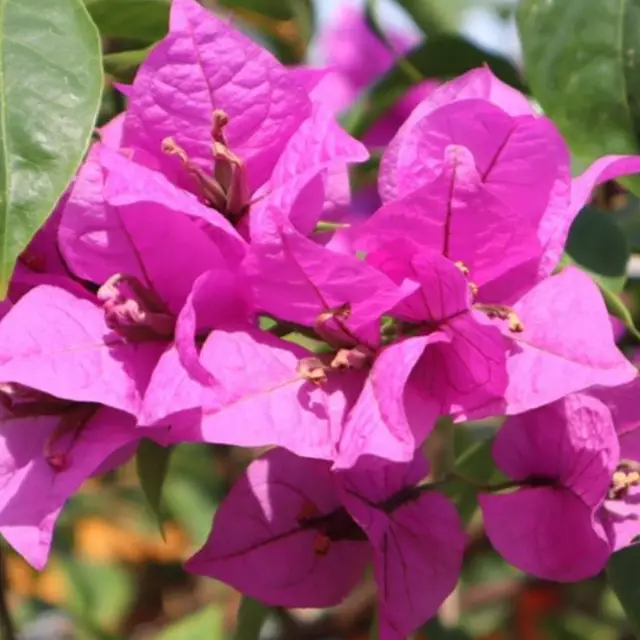 It grows on slopes of stones. This is a climber with thorns, stems, petioles, the edges of the leaves are hairy. The flowers have large purple, pink and red bracts. Perianth tubular, yellow. It develops rapidly and closely, the shoot grows up to 9 meters.
It grows on slopes of stones. This is a climber with thorns, stems, petioles, the edges of the leaves are hairy. The flowers have large purple, pink and red bracts. Perianth tubular, yellow. It develops rapidly and closely, the shoot grows up to 9 meters.
Grow a plant in a hot climate to decorate pavilions and serve to create barriers.
Bougainvillea naked or smooth (Bougainvillea glabra)
 It grows wild in arid rocky places in Brazil. Liana, having bare and branching stems, growing to a height of about five meters. A distinctive feature is the smaller number of spines, and pubescent to a lesser extent. A plant with bare, oval, green leaves, sharp at the end. Bracts pink, purple, orange, yellow, red. They bloom luxuriantly and for a long time. The vine can be cut and transformed into a bush.
It grows wild in arid rocky places in Brazil. Liana, having bare and branching stems, growing to a height of about five meters. A distinctive feature is the smaller number of spines, and pubescent to a lesser extent. A plant with bare, oval, green leaves, sharp at the end. Bracts pink, purple, orange, yellow, red. They bloom luxuriantly and for a long time. The vine can be cut and transformed into a bush.
Plants are found far from their place of origin, in particular in the Caucasus.
Peruvian bougainvillea (Bougainvillea peruviana)
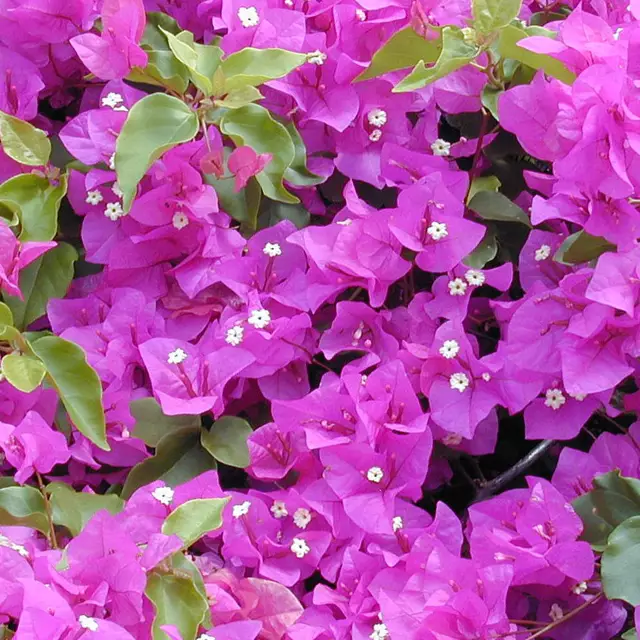 It has oval leaves, large and without villi. Unlike other species, it has a green bark. The flowers are yellowish, cream, and the bracts are round, pink, red and purple.
It has oval leaves, large and without villi. Unlike other species, it has a green bark. The flowers are yellowish, cream, and the bracts are round, pink, red and purple.
The plant in periodically dry times has the ability to bloom numerous times during the year. The leaves are large, green, oval, glabrous. Plants grow intensively and densely.
Home care
Bougainvillea loves warmth, when leaving the house it is necessary to adhere to important rules so that it grows in the comfort that it is used to in southern countries.
Grows for several years in one flowerpot, despite the fact that the root completely braided the ground.
Transplant and soil
If the plant is young, it should be transplanted every year, and then after three years, five years is possible. It is necessary to transplant the plant into a larger pot, without cutting the root, putting drainage.
The soil should be made with good penetration of water and air, mixing in equal parts: sod and leaf soil, compost, humus.
The composition should be neutralized with boiling water, and then dried.
You can also purchase land for growing plants in room conditions - universal slightly acidic.
Be sure to put drainage in the pot - large pebbles, broken bricks, expanded clay can be used.
Lighting
Bougainvilleas will not be damaged by direct sunlight, about five hours at least, it should be in good light. Under such conditions, the bracts will have color saturation, and the leaves will shine.
Growing temperature
The plant likes fresh air, the room needs ventilation, but so that the wind does not touch the branches. In summer, it is necessary to put it outside when it is warm and calm. In winter, in order for the plant to feel great, conditions should be set so that the temperature regime does not fall below 10℃.
In spring and summer, the temperature should be kept between 22 and 25℃. In the off-season in cool weather, the plant gains strength for growth and the emergence of new buds.
Watering
Water the plant moderately so that the water does not stagnate in the pots. Twice a week - watering is sufficient, in that case, we water it when the earth becomes dry. If the water drains into the saucer, it must be poured out, otherwise the root will begin to rot.
Water less when it gets colder.
Spraying is necessary for both the plant and the air, without falling on the flowers. In winter, when the leaves crumbled, spraying is not done, but a container with water is installed.
Top dressing
Fertilizer is not applied to the plant when transplanting, when you buy soil, because it is already there.
Starting from spring and until the middle of autumn, mineral substances are added once for two weeks. We take liquid fertilizers with a large number of elements such as: potassium, iron, phosphorus.
Pruning
Pruning the plant must be done three times a year - March, July and September.
Support is needed for the stems, because they are massive. You need to make a strong frame to support them.
Reproduction
Bougainvillea is propagated by cuttings and seeds. In the middle of summer, branches are cut off that have pulled up without flowers, removing the leaves from below, and immersed in a solution of Heteroauxin.
The cut must be secured with crushed coal. Then the branches are placed in a plastic cup with moistened sand, and with the addition of peat, covered from above, cutting off the bottle, they are taken out to a warm place with a temperature of 25℃. The so-called greenhouse is occasionally opened for ventilation, and also watered the ground. Open completely at the time when the growth of the cuttings begins.
After two months, put into a mixture that has sand, peat, leafy earth and peat, and keep at 20℃. When the branches grow 5 cm, pinching is done.
At the time when the root of the plant develops, transfer it to a pot with the same soil, and make drainage.
Diseases and pests
Bougainvillea with strong immunity, rarely gets sick. But it can still get sick.
There is a disease that the plant suffers from - chlorosis. With this disease, spots appear on the leaves, there is a hitch in growth and the flowers become smaller.
With this disease, the plant is fertilized with minerals in order to make it stronger.
Another bougainvillea can catch a fungal infection. It is manifested by the appearance of spots on the leaves, as well as mealy raids and rot.
Sick places of the plant are cut off, watering is stopped and treated with Fundazol. To help the plant, they loosen the earth, and add coal and sand.
In case of root rotting, the plant is pulled out of the pot, the infected parts are trimmed, but the rest are placed in the Fitosporin-M solution. Cut areas are treated with crushed coal or ash, and transplanted into new soil. The top of the plant is also disinfected with Fitosporin-M.
Bougainvillea pests can be brought into an apartment on purchased flowers - aphids, mealybugs.
Rid the plant of insects, possibly treating them with Aktellik, Karbofos or Fitoverma.
In cases where the plant is not very infested with pests, you need to help it by treating the leaves with a soapy solution. This should be done once every seven days. Then wash with warm water.
It is possible to resort to the action of a solution - olive oil and water.
Help with growing
- Choosing the right bougainvillea - shoots with a strong, excellent root, unpretentious varieties.
- Choosing the right pot - size 0.4 - 0.5 liters., Tall, but not wide.
- Leaves fall - poor lighting, low temperature.
Bougainvillea is a beautiful plant, with proper care, it will decorate your interior, and give you pleasure, creating a wonderful atmosphere.















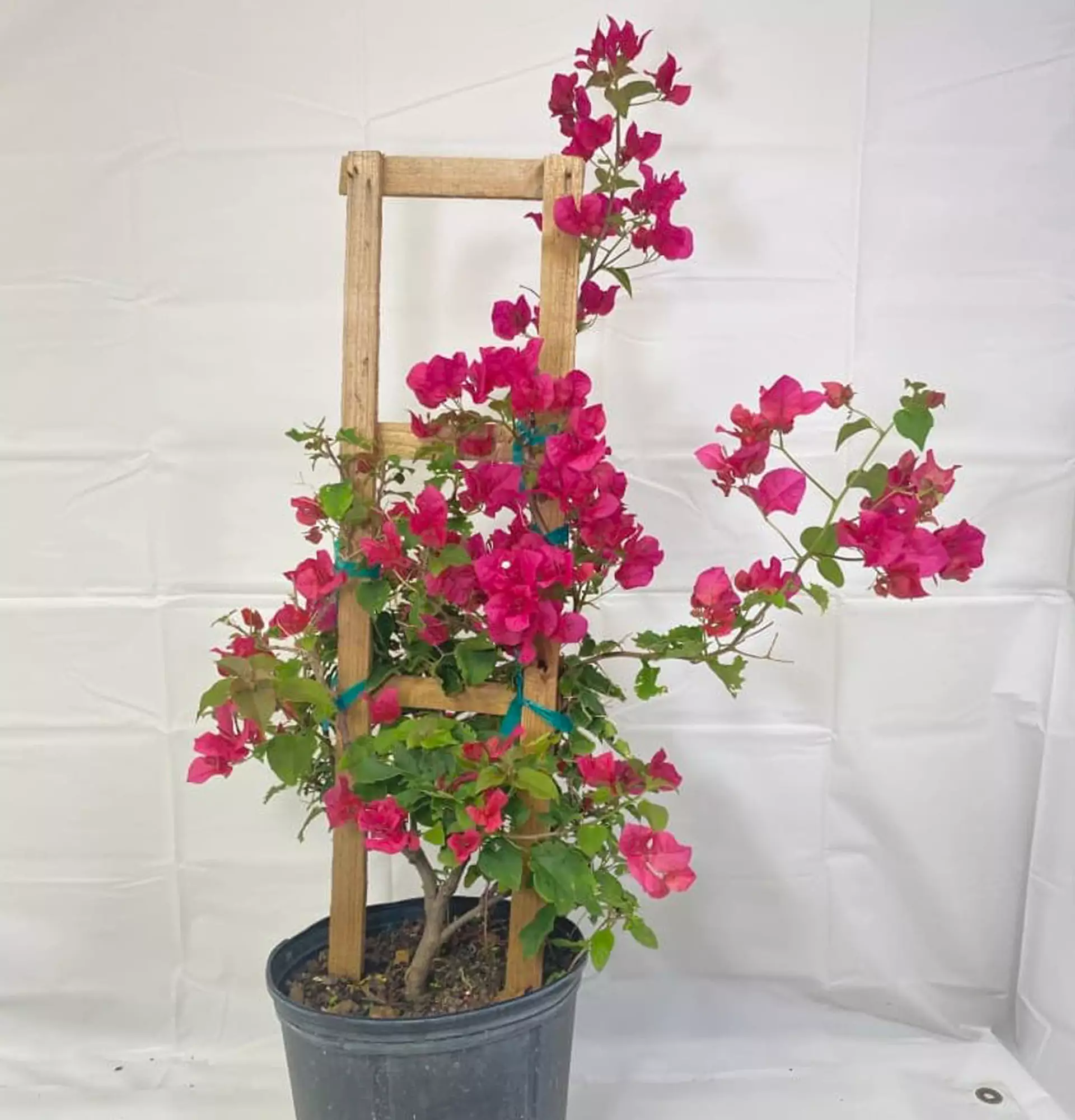
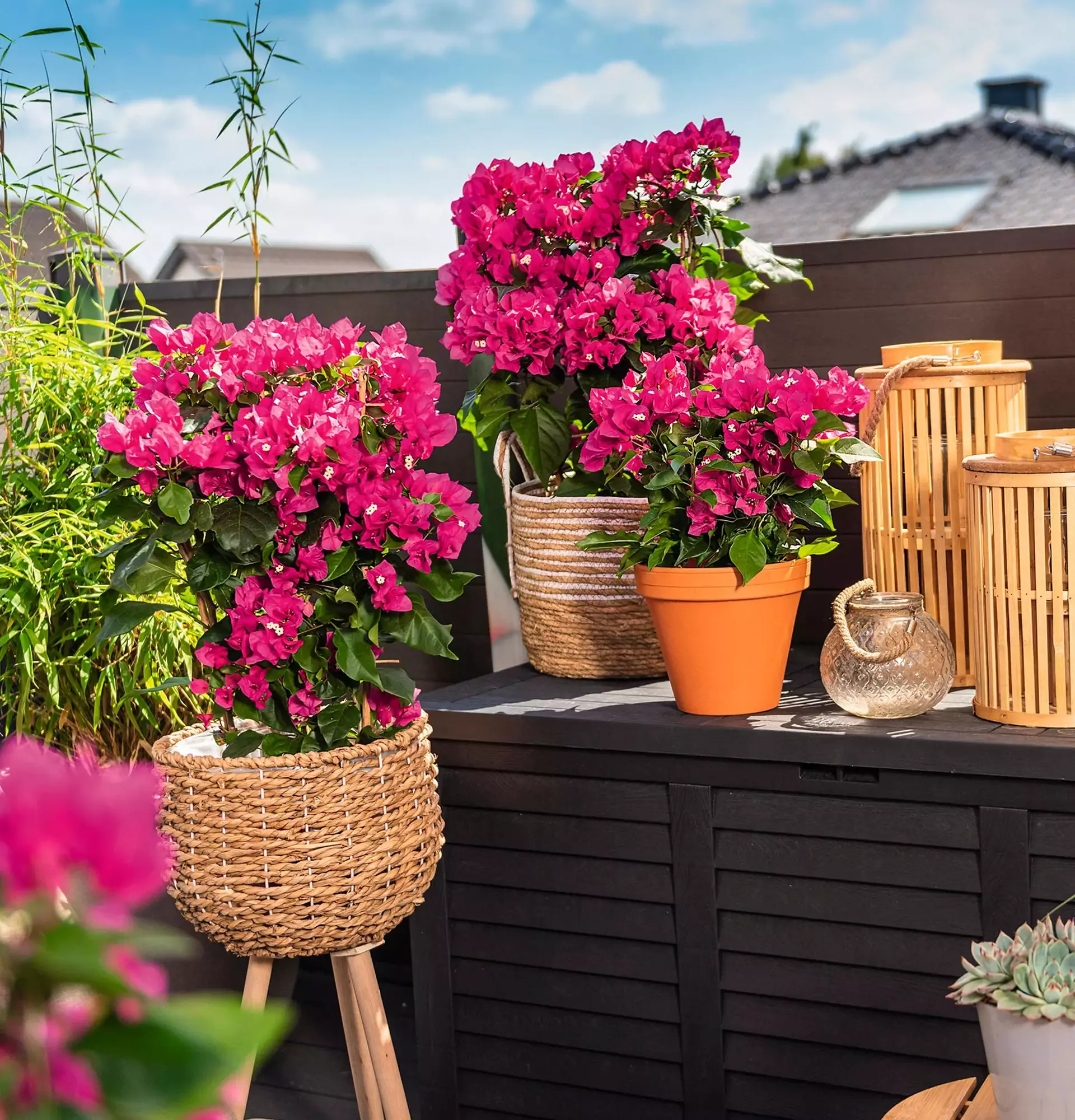


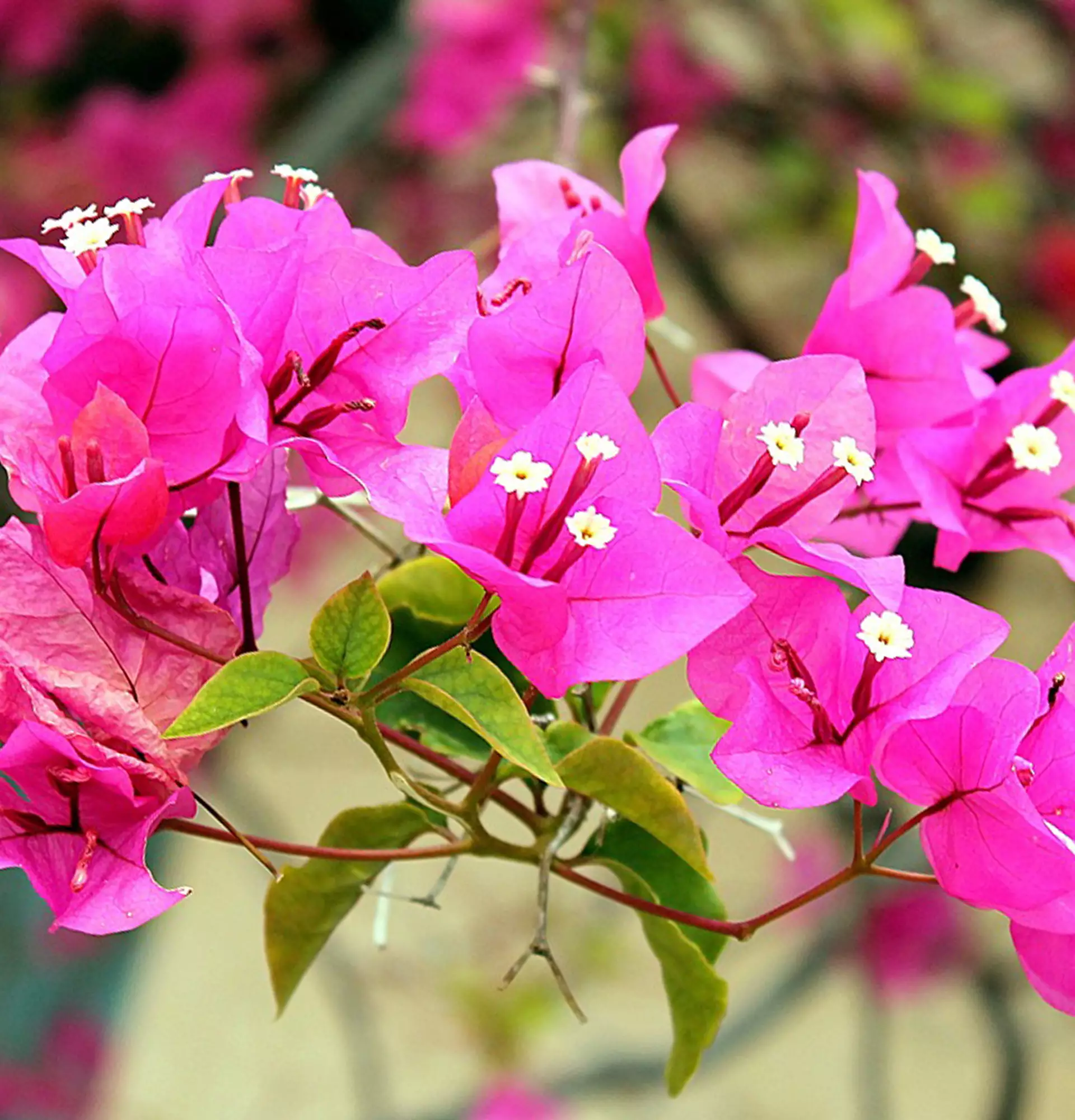
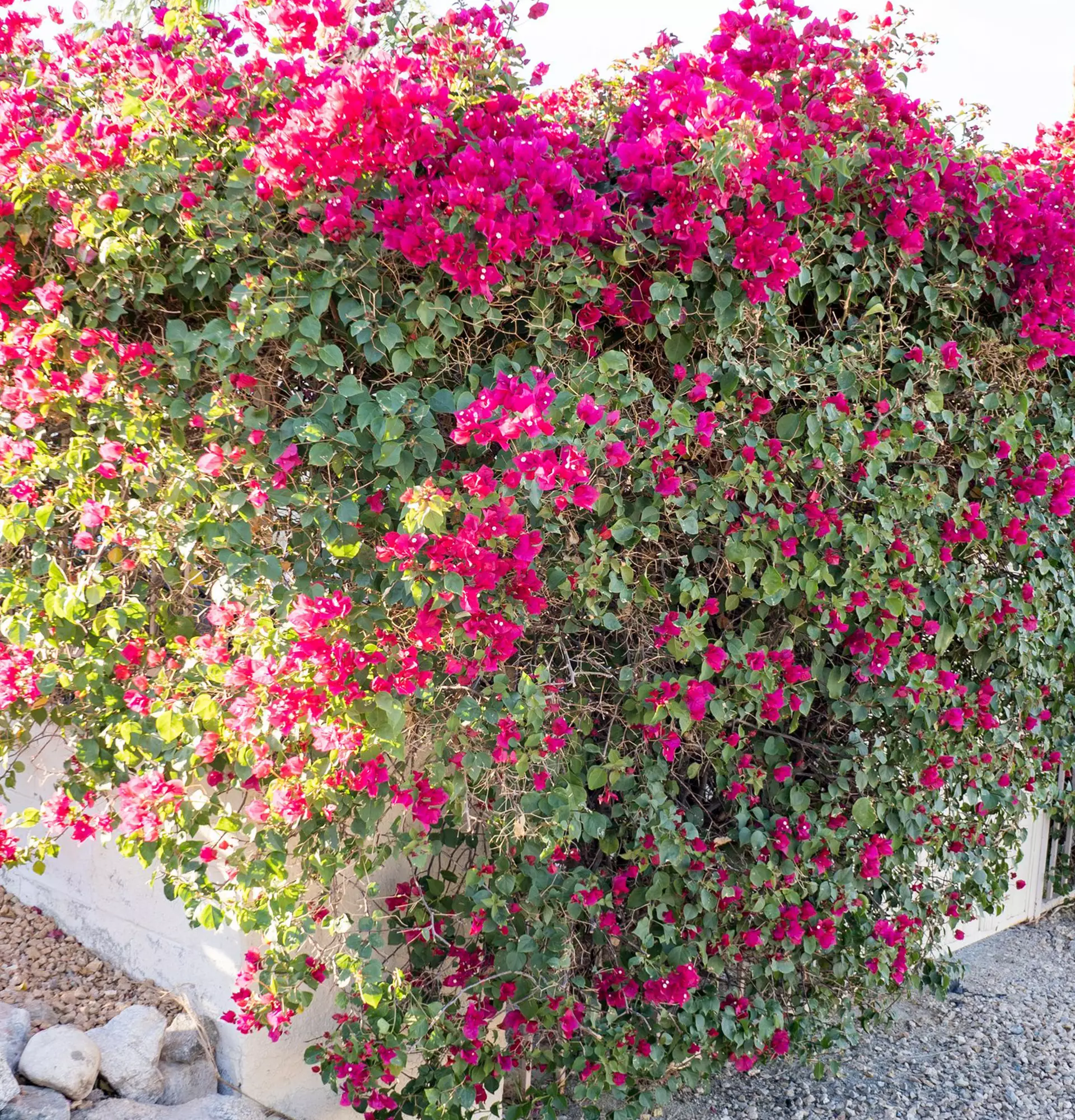
Write comments
Comments